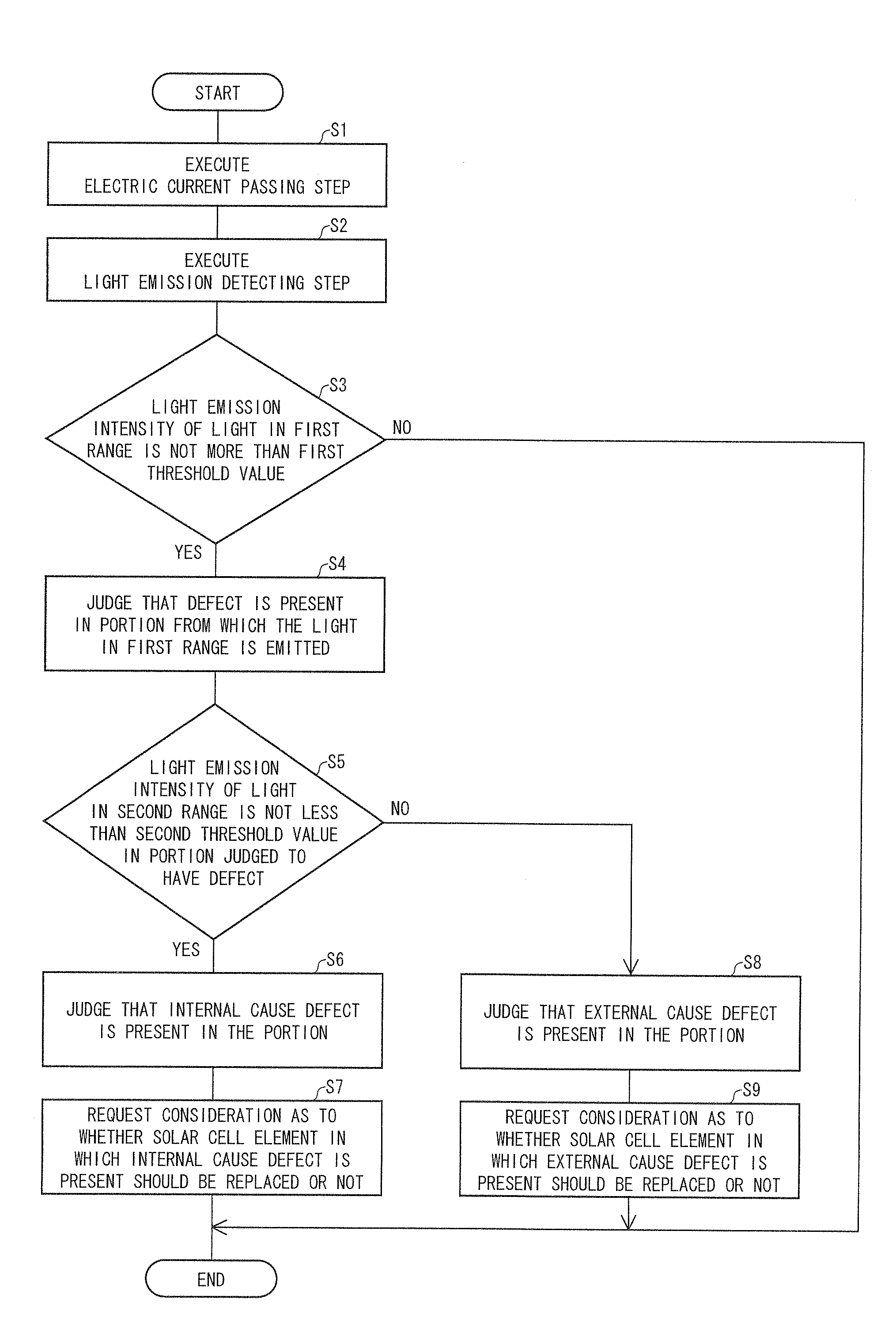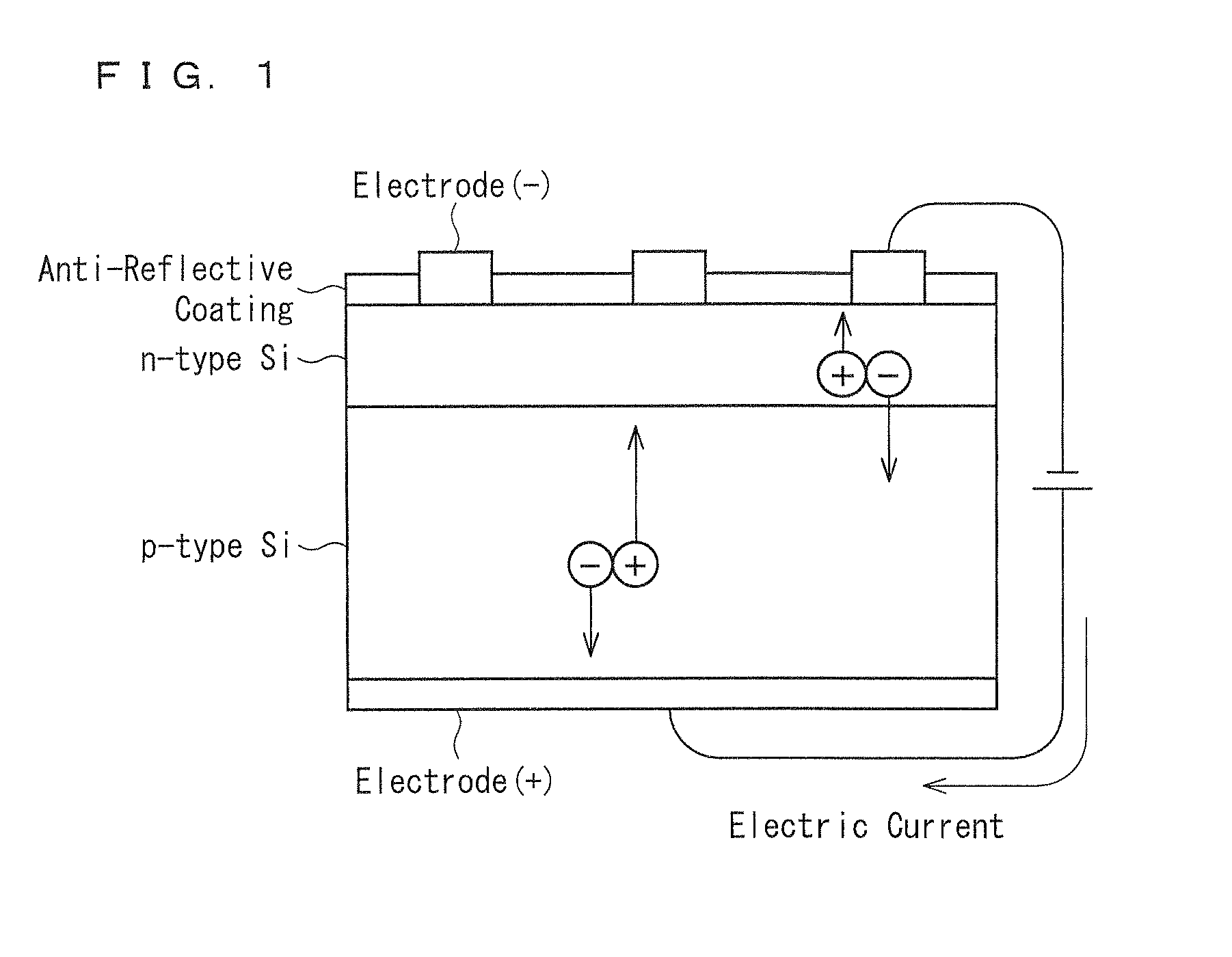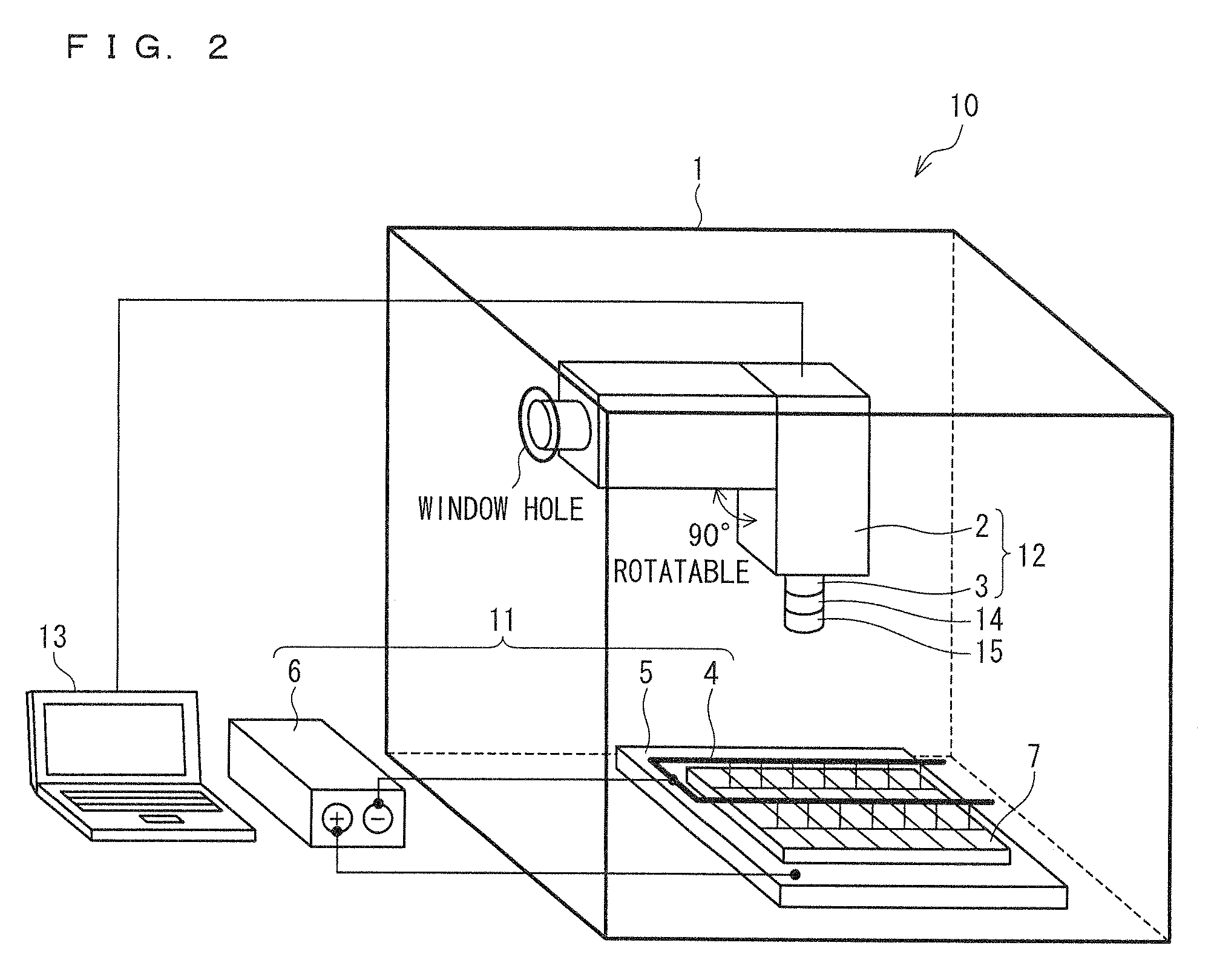Solar cell evaluation method, evaluation device, maintenance method, maintenance system, and method of manufacturing solar cell module
a solar cell and defect technology, applied in the direction of optical radiation measurement, image enhancement, instruments, etc., can solve the problems of preventing efficient production of solar cells with high performance and high reliability, affecting the performance and reliability of solar cells, and affecting the quality of solar cells, etc., to achieve easy evaluation of solar cell quality, easy to distinguish among defects of solar cells, and large facilities
- Summary
- Abstract
- Description
- Claims
- Application Information
AI Technical Summary
Benefits of technology
Problems solved by technology
Method used
Image
Examples
example
[0244]An electric current was passed, in a forward direction, through a solar cell module including a plurality of solar cell elements made from a polycrystalline silicon semiconductor, and light generated due to the passage of the electric current was analyzed. In the present Example, an InGaAs CCD camera (Xenics, XEVA-1.7 series) was used to picture this light.
[0245]First, light emission intensity (luminescence intensity) and spectral characteristics of light generated by passing an electric current of 40 mA / cm2 through the solar cell module was analyzed. The result is shown in (a) of FIG. 11. Note that the spectral characteristics were measured with the use of a spectrometer (JASCO Corp. M50) according to its operation manual. The broken line in (a) of FIG. 11 indicates a wavelength range (wavelengths in a range from 200 nm to 1200 nm) of light detected with the use of a Si CCD camera, and the dashed-dotted line in (a) of FIG. 11 indicates a wavelength range (wavelengths in a ran...
PUM
| Property | Measurement | Unit |
|---|---|---|
| wavelengths | aaaaa | aaaaa |
| wavelengths | aaaaa | aaaaa |
| wavelength | aaaaa | aaaaa |
Abstract
Description
Claims
Application Information
 Login to View More
Login to View More - R&D
- Intellectual Property
- Life Sciences
- Materials
- Tech Scout
- Unparalleled Data Quality
- Higher Quality Content
- 60% Fewer Hallucinations
Browse by: Latest US Patents, China's latest patents, Technical Efficacy Thesaurus, Application Domain, Technology Topic, Popular Technical Reports.
© 2025 PatSnap. All rights reserved.Legal|Privacy policy|Modern Slavery Act Transparency Statement|Sitemap|About US| Contact US: help@patsnap.com



